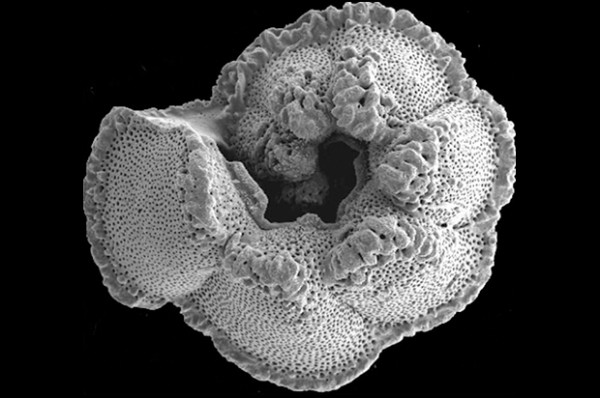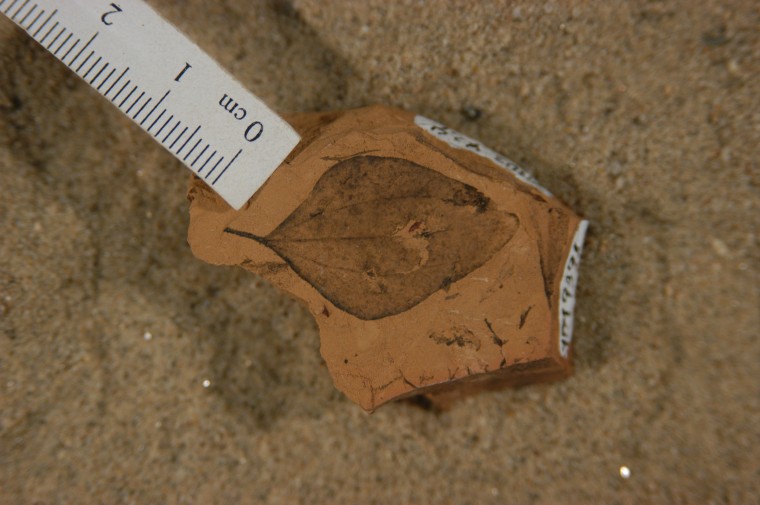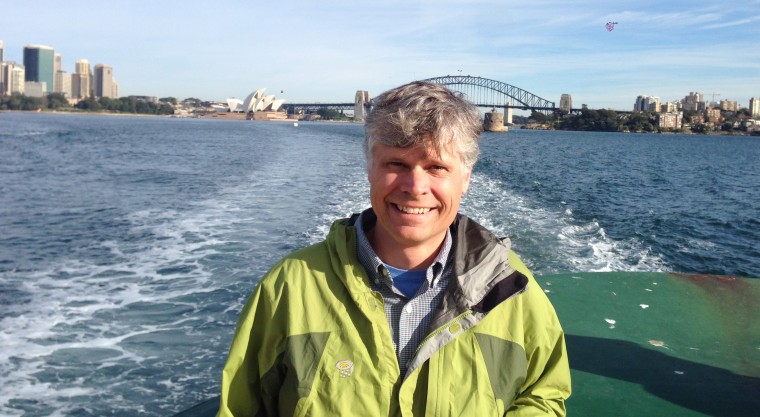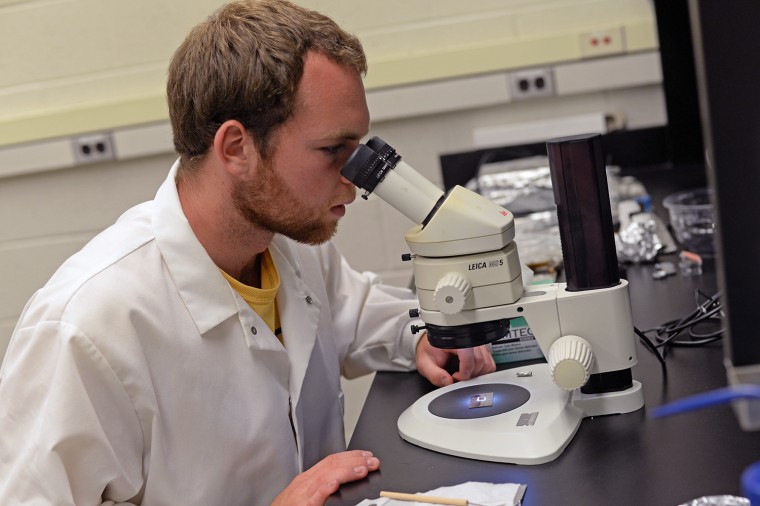Jim Greenwood, assistant professor of earth and environmental sciences, was awarded a Faculty Seed Research Grant from the Connecticut Space Grant Consortium, supported by NASA. The honor comes with a $6,000 award. Greenwood will use the grant to support his research on “D/H of ‘Dry’ Extraterrestrial Materials.” Understanding the distribution, delivery, and processing of volatiles in the solar system is of fundamental interest to planetary science. Volatiles influence a number of important properties of planetary bodies, such as the cooling, differentiation, volcanism, tectonism, climate, hydrosphere/atmospheres and especially habitability. Greenwood will use the award to develop a new state-of-the-art inlet system for the measurement…
Wesleyan faculty Joop Varekamp and Ellen Thomas are among the authors of a paper on rates of sea-level rise along the eastern U.S. seaboard titled "Late Holocene sea level variability and Atlantic Meridional Overturning Circulation," published in the journal Paleoceanography, Volume 29, Issue 8, pages 765–777 in August 2014. Varekamp is the Harold T. Stearns Professor of Earth Science, professor of earth and environmental sciences and professor of environmental studies. Thomas is research professor of earth and environmental sciences at Wesleyan, and also a senior research scientist in geology and geophysics at Yale University. Pre-20th century sea level variability remains poorly understood due to…
Sixty-six million years ago, a meteorite struck the Earth with enough force that the ensuing environmental changes, including floods, earthquakes, variable temperatures and light-obscuring dust clouds, possibly wiped out dinosaurs and other pre-historic life. Scientists believe this opened a path for mammals, and ultimately humans, to evolve. A new study by Dana Royer, associate professor of earth and environmental sciences, and colleagues from the University of Arizona and the Denver Museum of Nature and Science suggests that the chaos in the wake of the space rock's impact changed the Earth's plant life as well. Deciduous plants survived and flourished to a…
Dana Royer, associate professor of earth and environmental sciences, is the co-author of “Plant Ecological Strategies Shift Across the Cretaceous-Paleogene Boundary,” published in PLOS Biology on Sept. 15. The study reveals that a meteorite that hit Earth 60 million years ago – and may have led to the mass extinction of the world’s dinosaur population – also led to a shift in the landscape of plants, particularly deciduous plants. Royer and his colleagues showed how they applied bio-mechanical formulas to fossilized leaves of flowering plants dating from the last 1.4 million years of the Cretaceous period and the first 800,000 of the Paleogene. Read more about…
Philip Resor, associate professor of earth and environmental sciences, is taking his knowledge of petroleum down under. Between June 18-26, Resor, a Distinguished Lecturer for the American Association of Petroleum Geologists (AAPG), is delivering six lectures in Australia. The talks are geared toward members of the Petroleum Exploration Society of Australia (PESA) and a general petroleum industry audience. While abroad, Resor will speak on "Syndepositional Faulting of Carbonate Platforms" and "Revisiting the Origin of Reverse Drag." He'll be lecturing in Melbourne, Adelaide, Perth, Brisbane, Sydney and Canberra. A specialist in structural geology, Resor's work integrates field mapping, remote sensing, and numerical modeling to better understand the…
As a recent recipient of an undergraduate research fellowship, Jack Singer '15 is spending his summer at Wesleyan studying the geochemical evolution of the moon. The fellowship, supported by the Connecticut Space Grant College Consortium, comes with a $5,000 award. Grantees are expected to work on research related to space/aerospace science or engineering under the guidance of a faculty member or a mentor from industry. For the next three months, Singer will work on various research projects with his advisor James Greenwood, assistant professor of earth and environmental science. Singer will first prepare a fragmented lunar sample (Apollo 12035,76) for…
Ellen Thomas, research professor of earth and environmental sciences, is the author of a paper titled "Rapid and sustained surface ocean acidification during the Paleocene-Eocene Thermal Maximum," published in Paleoceanography, May 2014. In this paper Thomas and her colleagues document that ocean acidification of the surface ocean not only occurred during past times of global warming and high CO2 levels, but also by how much — about 0.3 pH units. The group studied planktic foraminifers from a drill site in the North Pacific. Thomas' study has been highlighted in a press release from Columbia University and also on Phys.org.
Assistant Professor of Earth and Environmental Sciences James “Jim” Greenwood has received a $331,000 grant from NASA to support his research on the moon’s water. His proposed research, tracking water in rock samples brought back by the Apollo missions, will “take a giant leap towards solving one of the most important questions in planetary science – whether the Moon is wet or dry,” Greenwood said. “We’ll be studying pockets of glass trapped in early and late-crystallizing minerals in lunar mare basalt samples,” Greenwood said. “We will measure water and other volatile elements in these trapped melt pockets to reconstruct the…
Ellen Thomas, research professor of earth and environmental sciences, is the co-author of a paper titled "Carbon Sequestration during the Palaeocene–Eocene Thermal Maximum by an Efficient Biological Pump," published in the April 2014 edition of Nature Geoscience. In the paper, Thomas explains how ocean-dwelling bacteria may have vacuumed up carbon and halted a period of extreme warmth some 56 million years ago. The finding suggests how Earth might once have rapidly reversed a runaway greenhouse effect. Its effect on global oceanic productivity is controversial. In the paper, Thomas and her colleagues present records of marine barite accumulation rates that show distinct peaks during…
James "Jim" Greenwood, assistant professor of earth and environmental sciences, and four colleagues have published a paper that casts doubt on the theory of abundant water on the moon while simultaneously boosting theories around the creation of the moon, several billion years ago. The paper, “The Lunar Apatite Paradox,” published March 20 in the prestigious journal Science, stems from work involving the mineral apatite, the most abundant phosphate in the solar system. (Along with its presence on planets, it’s found in teeth and bones.) Initial work on the lunar rocks brought back to Earth by the Apollo missions indicated that…
Two faculty, one student and one alumnus made paper presentations at the 45th Lunar and Planetary Science Conference in The Woodlands, Tex., March 17-21. The Planetary Science Conference brings together international specialists in petrology, geochemistry, geophysics, geology and astronomy to present the latest results of research in planetary science. The five-day conference included topical symposia and problem-oriented sessions. During the conference, Marty Gilmore, chair and associate professor of earth and environmental sciences, presented a paper on the "Venus Exploration Roadmap to the Venus Exploration Analysis Group (VEXAG)" on March 20. James Greenwood, assistant professor of earth and environmental sciences, presented "Hydrogen Isotopes of…





